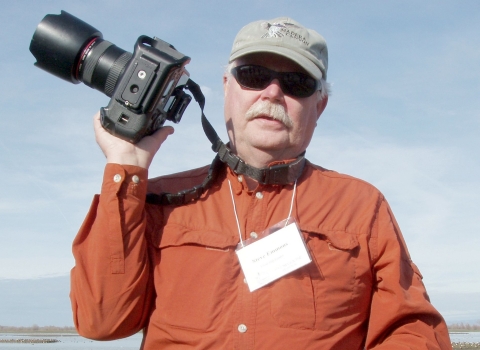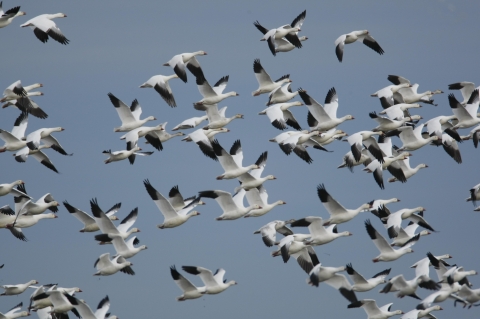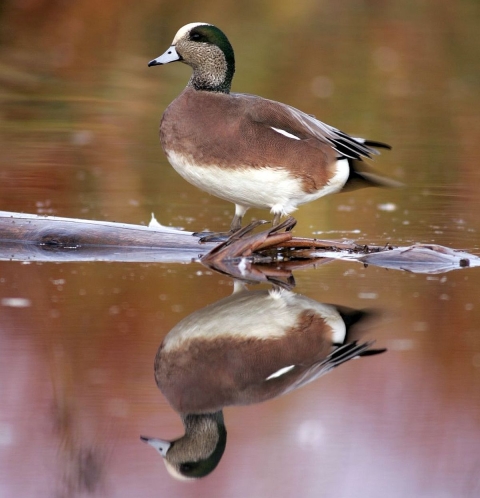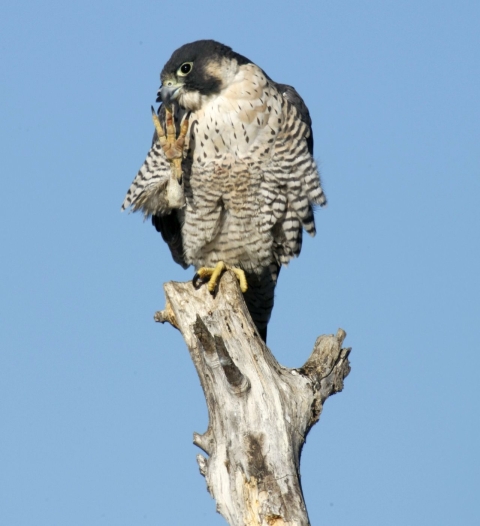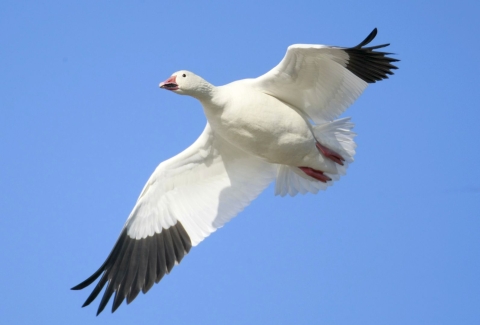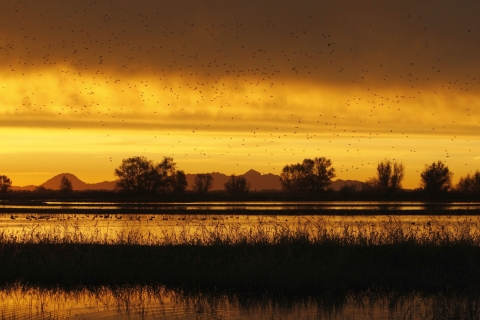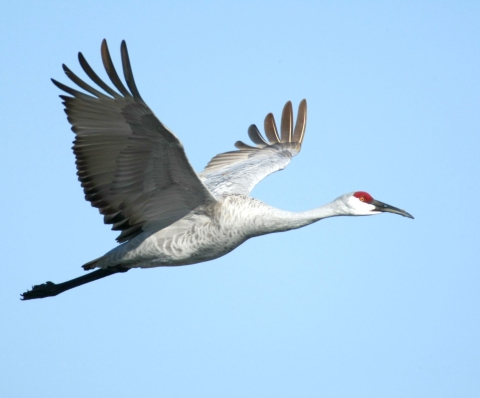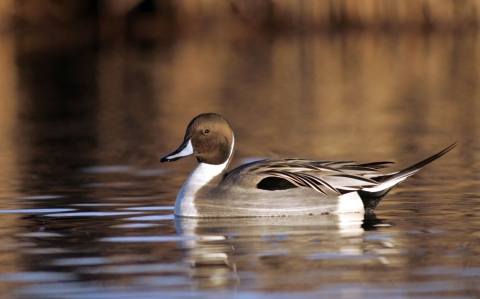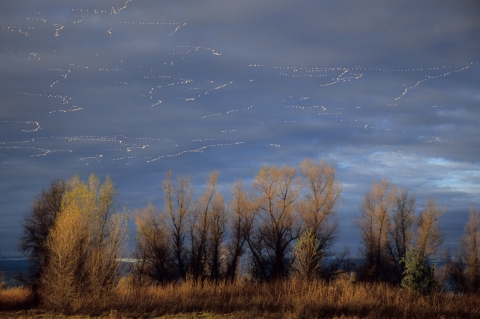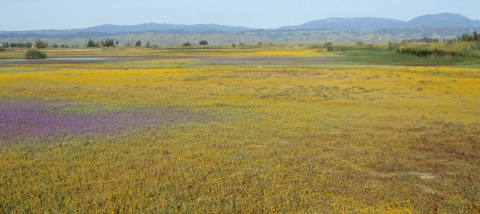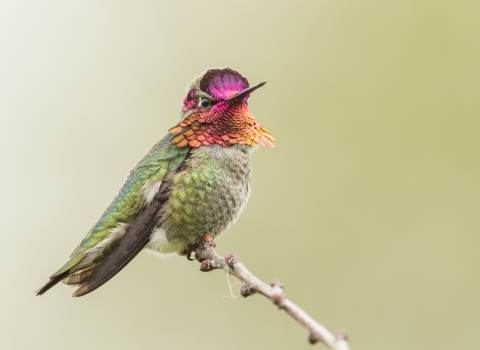Steve Emmons is a morning person. “I tend to shoot more sunrise photographs than sunsets,” he says of the photograph above. “This sunrise was at the wetlands immediately behind the Sacramento National Wildlife Refuge shop and residence. A good tripod is critical for the slow shutter speeds needed to record the early light before sunrise.”
Emmons also is a bird person. Beforing retiring in late 2020, he was manager at Sacramento National Wildlife Refuge and Delevan National Wildlife Refuge in California for more than 20 years. Each spring and fall, he made a point of getting out regularly with his camera as hundreds of thousands of migratory waterfowl passed through the refuges along the Pacific Flyway. He’s been photographing birds and other wildlife for more than 50 years.
Sacramento and Delevan Refuges are part of the Sacramento National Wildlife Refuge Complex, which inlcudes three other nearby refuges and three wildlife management areas. For this story, we asked Emmons to select a few of his favorites photos from those places and reflect briefly about them.
“White geese — snow and Ross’s geese — arrive at Sacramento Refuge in October. Their numbers continue to increase throughout the month and will top 150,000, many along the refuge’s auto tour route. Although snow geese are more numerous, about 30 percent of the white geese on the refuge are the smaller Ross’s geese, some of which can be seen toward the bottom of this image. The two species frequently will be seen together through most of the winter until they form single-species flocks right before heading north to different breeding grounds.”
“Years ago at Colusa National Wildlife Refuge, then-refuge-manager Mike Peters set up a test blind for us to use to evaluate the potential location for a public photography blind. I spent Thanksgiving morning that year in the temporary blind. Fortunately, as the sun began to rise, it broke through a heavy overcast, adding reddish light to the underside of the clouds, which is reflected in the water surrounding this drake (male) American wigeon.”
“About half a dozen peregrine falcons will spend the winter at Sacramento Refuge. This adult could often be seen perched at the top of a dead tree ‘snag’ right off the refuge’s auto tour route. As long as visitors followed the refuge regulation to remain in their vehicles except in designated locations, the bird would completely ignore the traffic jam it occasionally caused. Eventually the snag blew over in high winds, and the next year we ‘planted’ a new snag for the birds to perch in.”
“Even in winter when the sun is lower in the sky, it’s best to photograph earlier in the morning or later in the afternoon to avoid really harsh shadows, particularly with birds in flight. I like photographing geese in flight, especially when they are coming in to land. This photo of an adult snow goose was taken from my vehicle along the refuge auto tour route.”
”Local residents refer to the Sutter Buttes as the smallest mountain range in the world. I don’t know if that’s true or not, but the buttes do make a nice background for a Sacramento Refuge sunrise. From mid-October through January, waterfowl fly off the refuge after sunset to feed in nearby rice fields. About 45 minutes before sunrise, between 400,000 and 600,000 ducks return to the refuge’s sanctuary area to spend the day.”
“The best location for observing greater sandhill cranes within the Sacramento National Wildlife Refuge Complex is at the Llano Seco Unit of the Steve Thompson North Central Valley Wildlife Management Area. Although I have occasionally seen cranes on Sacramento Refuge, and there can be up to 300 on Colusa and Delevan Refuges in October and November, cranes are much easier to photograph at Llano Seco, particularly when the wetlands immediately north of the observation platform are being flooded (early October or early November, depending on the year). They’ll fly by close to the observation platform and also along the nearby walking trail.”
“Usually juvenile raptors are more tolerant of people and vehicles than are the adults. Fortunately for photographers one winter, this adult California red-shouldered hawk was extremely tolerant along a short stretch of the Sacramento Refuge auto tour route. It would completely ignore the traffic and just watch for any movement by a rodent or small bird.”
“Northern pintail is the most common wintering duck within the Sacramento Refuge Complex, where up to 35 percent of the North American population winters. This drake was photographed from the public photography blind at Delevan Refuge. I love the reflections of the surrounding vegetation that you can get at this particular blind. All four blinds within the complex have viewing ports at floor level, so I’ll lay down on the floor to get as close to eye level with the bird as I can.”
“When the days start warming up in March, the white geese start their northbound exodus after wintering at Sacramento Refuge. With storm clouds in the sky, any break in the cloud cover can make the birds glow against the dark clouds.”
“If the area gets sufficient winter rains at the right time, the vernal pools and adjacent alkali meadows in April can turn gold and purple from California goldfields, Fremont’s goldfields and harlequin downingia blossoms. This vernal pool and alkali meadow are near the beginning of the auto tour route at Sacramento Refuge.”


